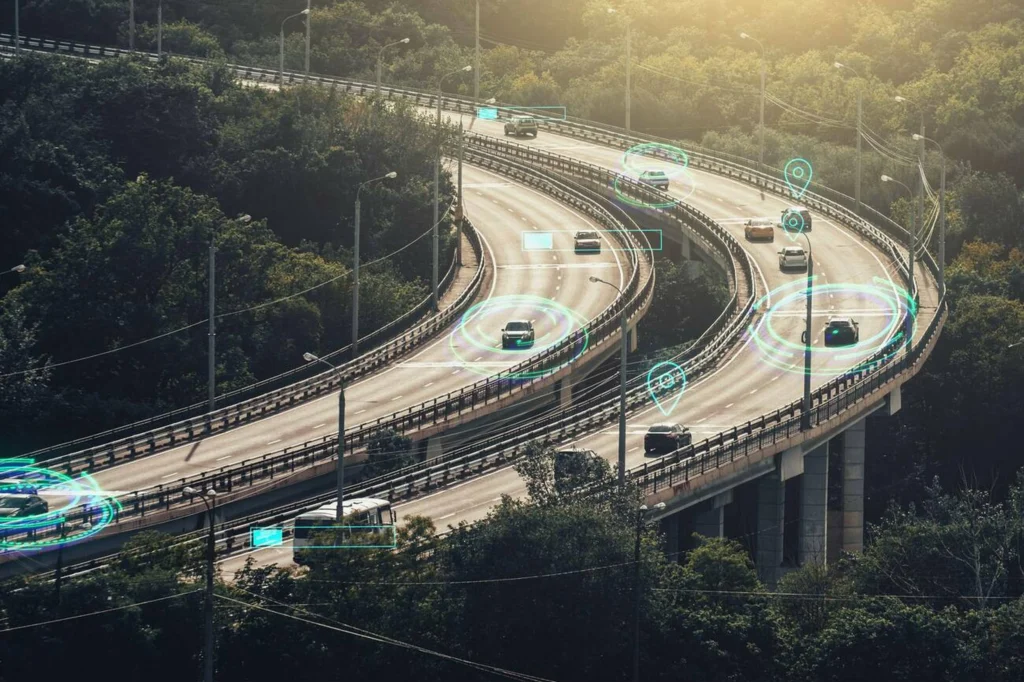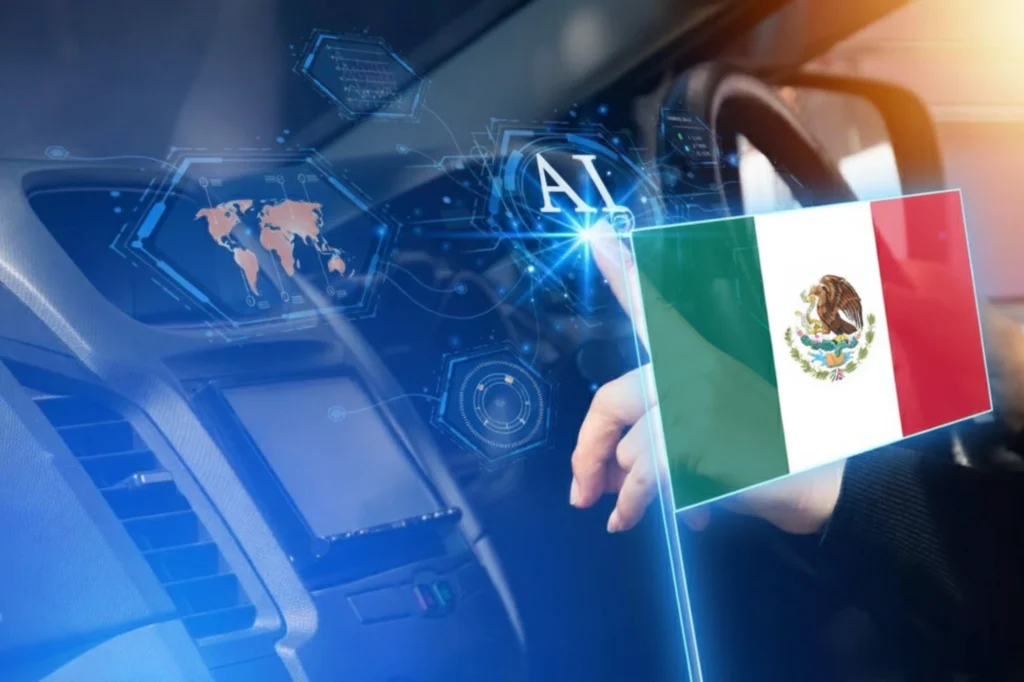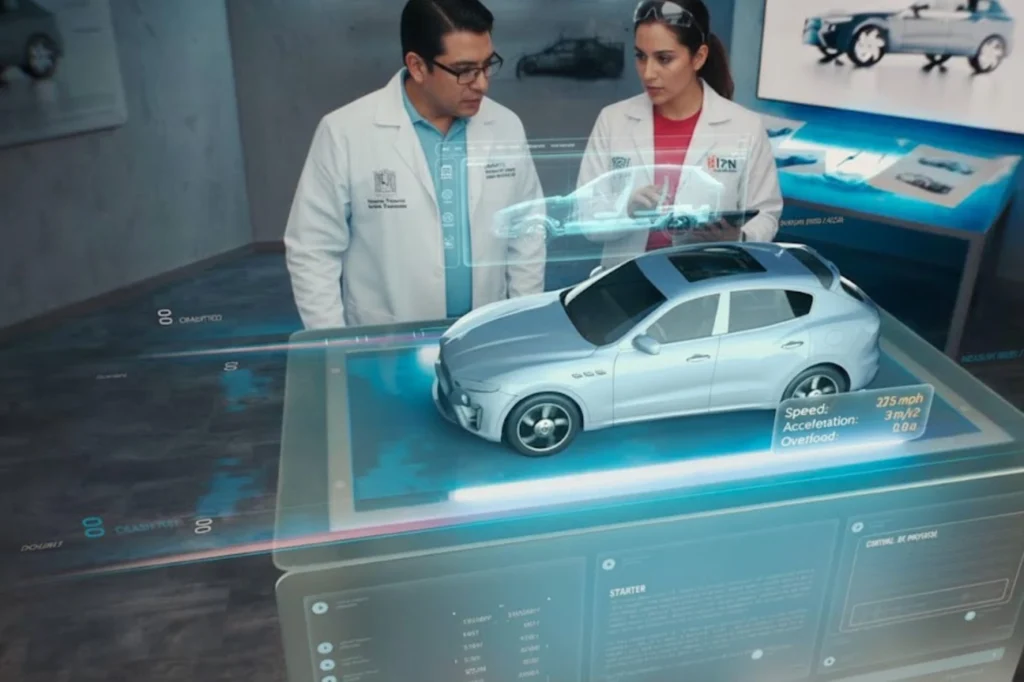Every year, thousands of road accidents in Mexico share a common cause: human error. Could technology anticipate these risks and reduce their impact?
This question is driving various Mexican institutions to explore the role of AI in road safety. Althoug its development is still ongoing, AI has the potential to become a game-changing tool for analyzing traffic, identifying risk patterns, and preventing accidents before they occur.
According to the Instituto Mexicano del Transporte (IMT, Mexican Institute of Transportation), more than 90% of road accidents are tied to human behavior. AI is transforming that reality by shifting the focus from reaction to prevention. By analyzing data such as speed, weather conditions, and vehicle density, AI-driven systems enable authorities to make quicker, smarter, and safer decisions.

How AI in Road Safety Is Becoming Part of Modern Mobility
Across many cities in the country, cutting-edge technologies are being tested—innovations that could redefine urban mobility in the coming years. From computer vision cameras and traffic sensors to smart analytics systems, these tools aim to detect pedestrians, cyclists, and vehicles that disregard traffic lights, while optimizing signal timing based on real-time traffic flow.
AI in road safety is not meant to replace people, but to support decision-making and reduce human error. In the future, its application could help ease congestion, improve emergency response, and strengthen safety in high-risk areas.
The IMT notes that progress will depend on Mexico’s ability to integrate data, unify platforms, and enable seamless communication among vehicles, pedestrians, and public authorities. Mexico is now laying the groundwork for its transition toward a smarter, more connected mobility ecosystem.

The Role of Mexican Science in the Future of Road Safety
Leading institutions like the Universidad Nacional Autónoma de México (UNAM, National Autonomous University of Mexico) and the Instituto Politécnico Nacional (IPN, National Polytechnic Institute) are conducting research that combines AI, smart urban sensors, and vehicle communication systems. Their goal: to detect risky driving behaviors and issue early alerts that help prevent accidents before they happen.
According to UNAM, applying AI in urban traffic could reduce serious accidents by up to 40% if combined with road safety education and appropriate public policies. Meanwhile, IPN demonstrates that machine learning models can identify high-risk areas and propose more effective prevention strategies.
These efforts confirm that Mexican science is moving toward practical, measurable solutions, where AI-driven road safety technology complements human expertise and contributes to significantly improving the traffic environment in cities such as Mexico City.

Challenges Mexico Must Overcome to Implement Artificial Intelligence
The results are encouraging, but important hurdles remain. Limited infrastructure and uneven connectivity still make large-scale adoption difficult, while the lack of coordination between public and private systems slows progress toward a truly connected network.
Despite these challenges, academic and governmental interest continues to grow each year. New programs aim to adapt international models to the Mexican context, where cars, public transport, cyclists, and pedestrians share limited urban space.
For this reason, strong collaboration between academia, government, and industry will be vital. Only a coordinated approach will allow the country to fully leverage AI’s potential in road safety and build a safer, more efficient mobility system..
In this context, one of the most promising areas is the development of Advanced Driver Assistance Systems (ADAS), designed to prevent accidents caused by distracted driving. These AI-powered systems can detect risky behaviors in real-time and alert the driver before an incident occurs.
Researchers in Mexico are already exploring the possibility of integrating these models into mobile devices, with promising results in terms of accuracy and response time. Their future application in urban environments could mark a significant breakthrough for road safety by turning technology into a direct ally within the vehicle.

Towards Safer and More Connected Mobility
The advancement of AI in road safety is closely tied to the evolution of smart cities, where infrastructure and data work together to make travel safer. This approach, known as intelligent mobility, aims to optimize traffic flow, reduce accidents, and enhance the quality of life in urban environments.
This November, this trend will take center stage at SMARTCITY, an expo dedicated to mobility and technological innovation. It will bring together projects focused on applying AI in transportation management and accident prevention. The event will showcase how these tools are beginning to pave the way in Mexico and around the world. Get a sneak peek in this short video, which highlights the technologies that could soon transform our perspective on road safety.

AI also holds great potential for enhancing road safety education. By analyzing how drivers react to various situations, AI can help design smarter, more effective prevention strategies. A practical example is The Yield Sign: What it Means in Mexico, paired with self-powered LED systems, which encourages shared responsibility between pedestrians and motorists.
Although AI is still in its developmental stage, its progress points in a clear direction. Every project, study, and pilot application represents a step toward safer, more organized, and more sustainable traffic, where technology becomes a true ally in protecting lives.
